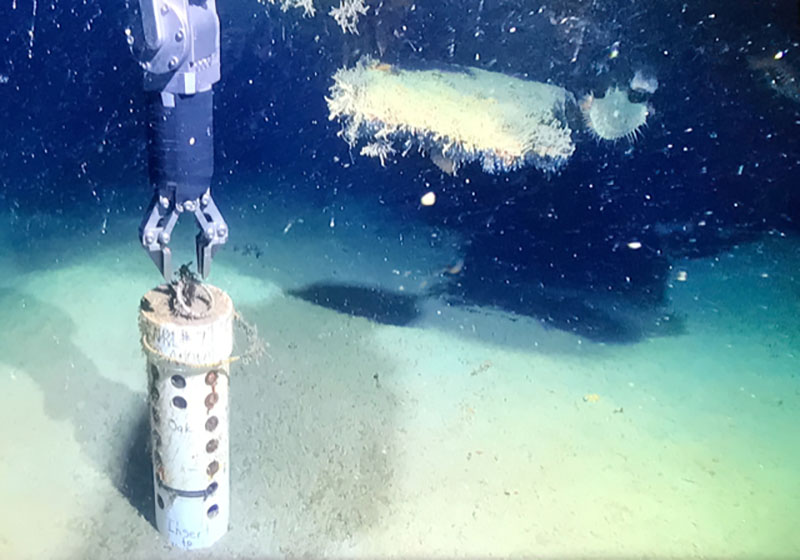
By Melanie Damour, Marine Archaeologist
June 26, 2019
From her graceful clipper bow and ornate floral metalwork to her interior woodwork using the finest mahogany and teak, the steam yacht Anona was a sight to behold in the early 20th century. Originally owned by a wealthy industrialist who purchased her in 1904, the luxury yacht was likely the scene of many social events throughout her first few decades. The years eventually took their toll though, and Anona passed through the hands of several more owners until 1943 when she was acquired by the Pan-American Banana Producers Association of Montreal, Canada, for use as a freight carrier. In 1944, the former grand dame of the seas was reduced to hauling a cargo of potatoes to the West Indies when her steel hull plates suddenly buckled, causing her to sink.
She came to rest in more than 1,200 meters (4,000 feet) of water where she remained forgotten until a deep-tow survey was conducted for an oil and gas company in 1995. Initially interpreted as the remains of a modern crew boat, the sonar target was not identified as Anona until 2002 when a remotely operated vehicle (ROV) investigation was conducted to collect video footage of the unknown shipwreck. That delicate floral metalwork on the bow and other features of her hull were key to successfully identifying her.
The shipwreck sits upright on the seafloor and measures approximately 42 meters (138 feet) in length with a beam of just over 5.3 meters (17 feet). Exhibiting relief as high as 5 meters (17 feet) above the seafloor, Anona remains a sight to behold in the deep, dark waters of the northern Gulf of Mexico. You can still see the faint traces of dark gray paint on her hull above the waterline and the red paint below it. Since her discovery and identification, Anona has been the subject of several archaeological investigations using autonomous underwater vehicles and ROVs.
In 2014, our Gulf of Mexico Shipwreck Corrosion, Hydrocarbon Exposure, Microbiology and Archaeology Project, or GOM-SCHEMA, placed two corrosion monitoring platforms on the seafloor just off Anona’s stern so that we could better understand wood degradation and metal corrosion processes at this particular shipwreck site. Four months later, one of those in situ experiments was collected while the other was left behind for future retrieval.
Today’s primary objectives at the Anona site were to retrieve that second 2014 experiment along with two others placed offsite in 2017 and to deploy new microbial recruitment experiments. Due to equipment issues encountered earlier this morning, the ROV could not be deployed until late in the afternoon. Unfortunately, we did not have sufficient time to collect new imagery of the shipwreck other than at the stern where the 2014 experiments were placed. Nevertheless, while Anona’s role in the human story ended long ago, her contribution to our understanding about the transport of microorganisms in the deep, dark sea is just beginning—and she has much to offer.

Retrieving a corrosion experiment placed near Anona stern in 2014. Image captured by ROV Odysseus, courtesy of Microbial Stowaways. Download larger version (jpg, 240 KB).
Learn more about Anona’s story at: https://hamdanlab.com/shipwreck-sites/anona-2/